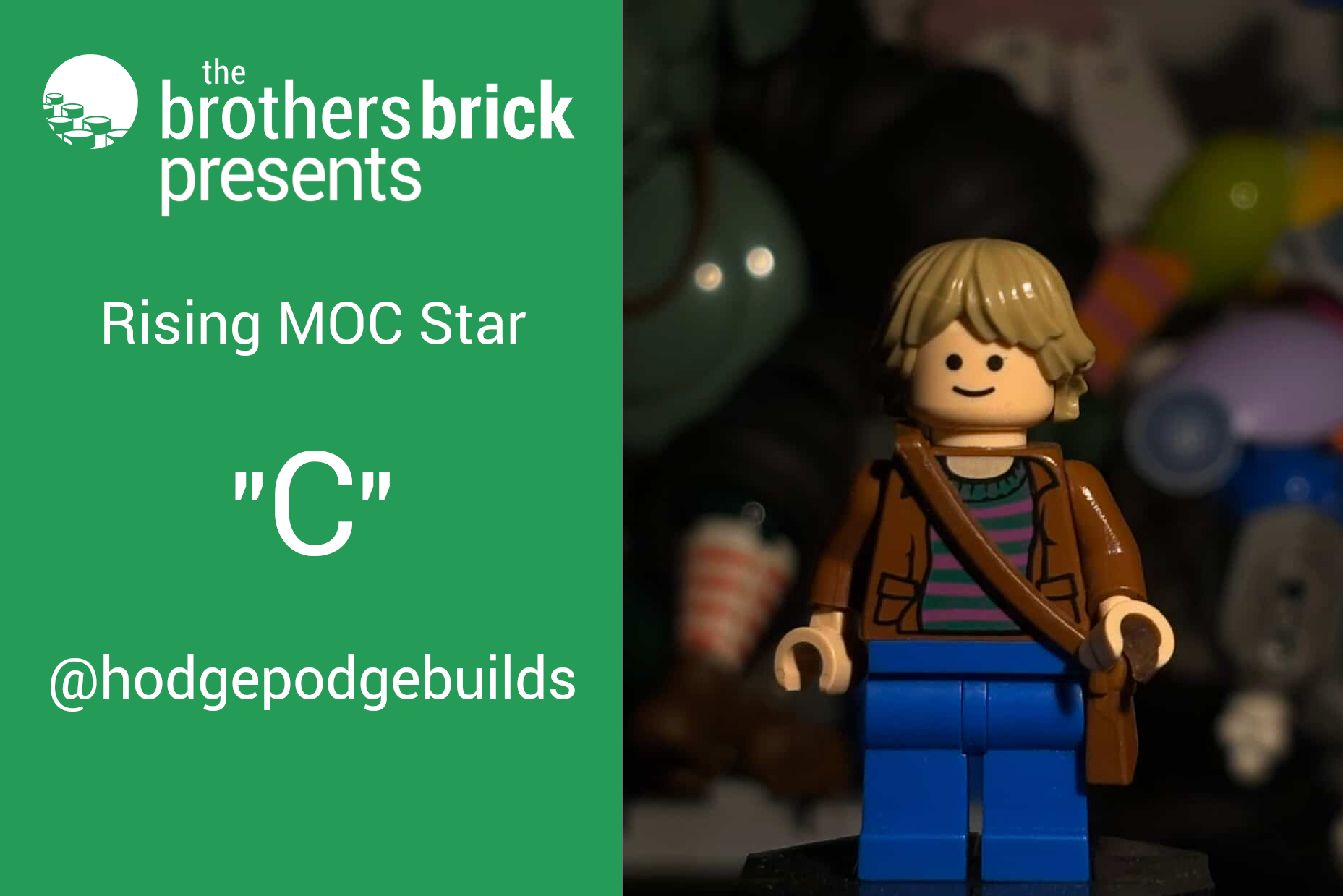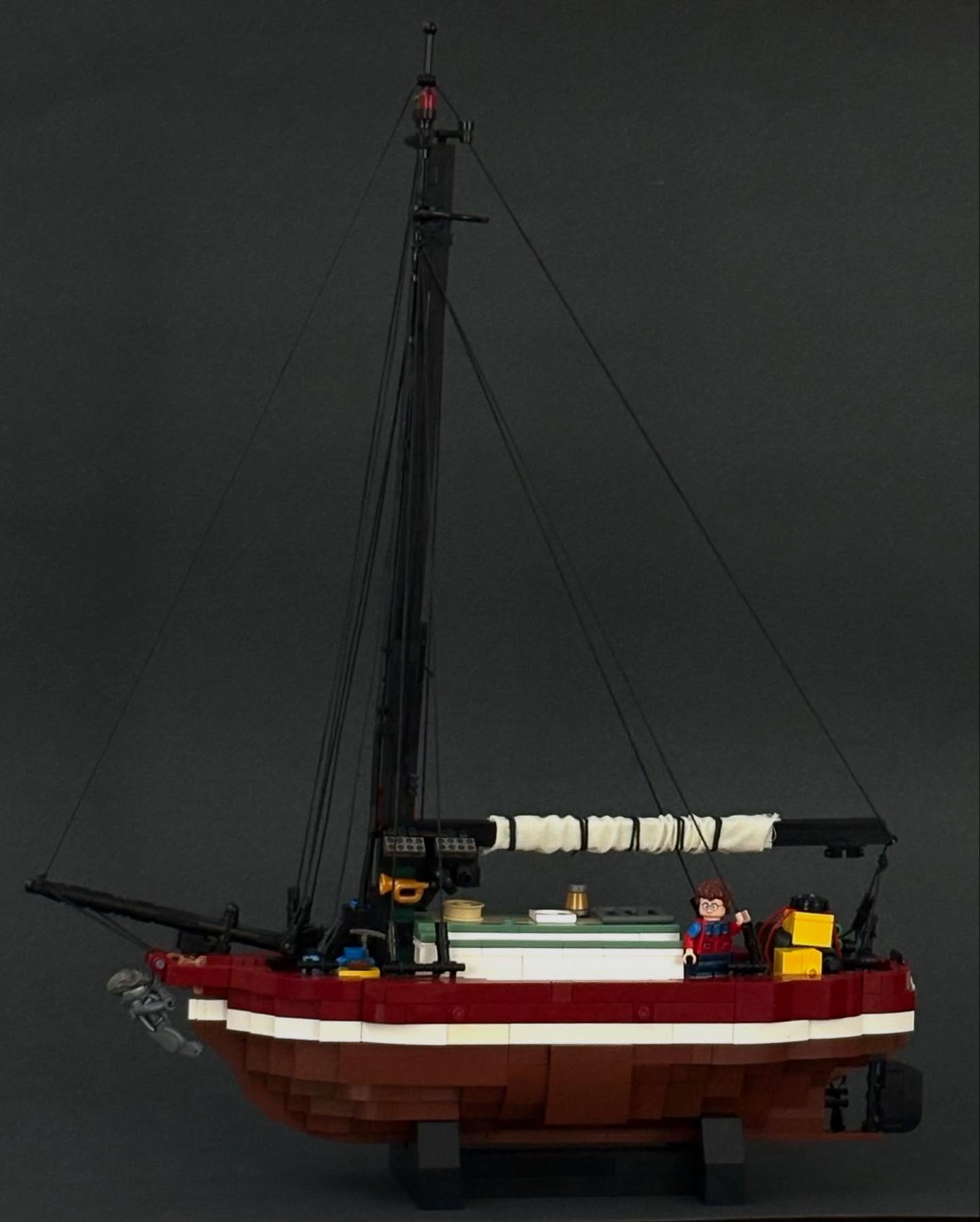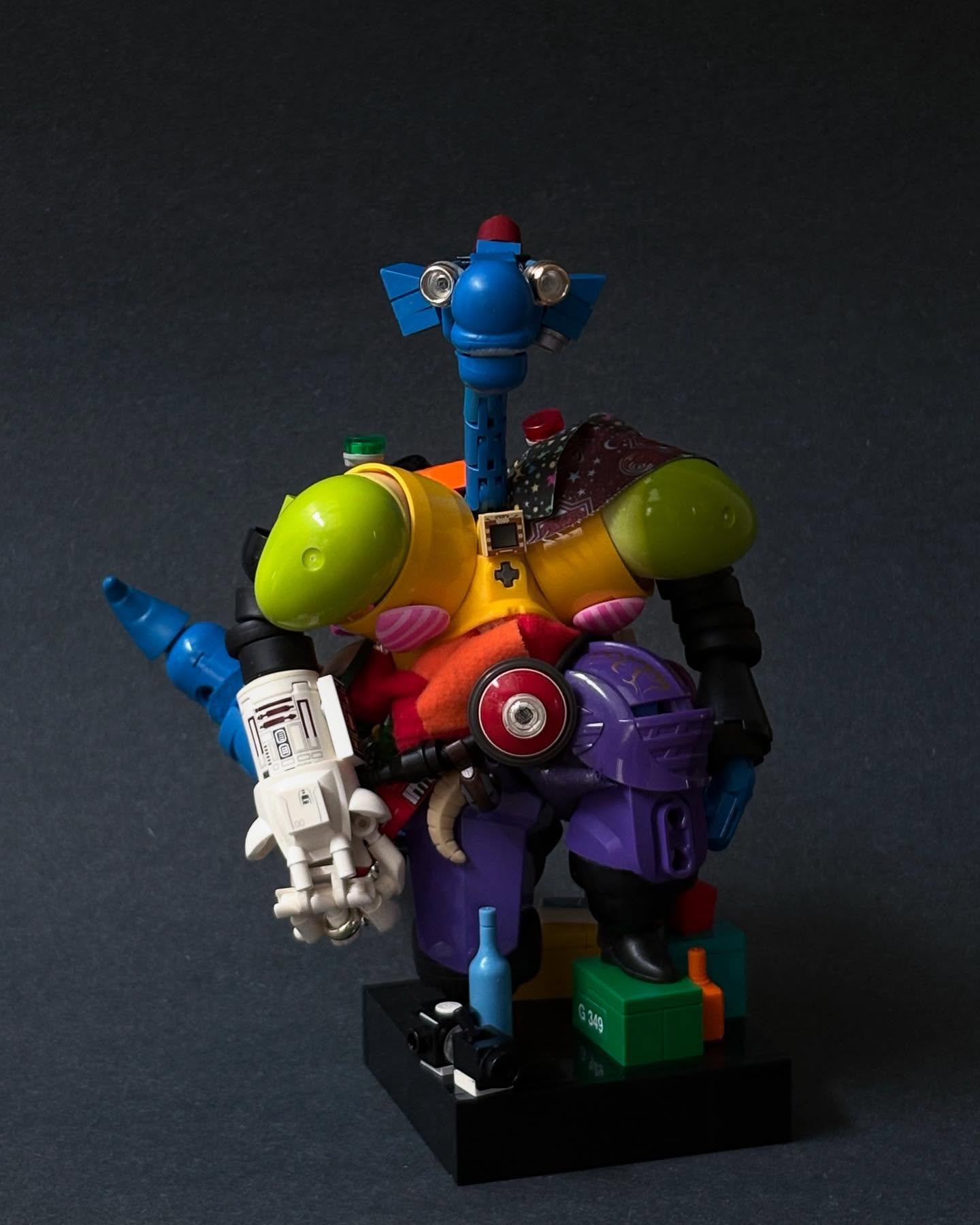Every so often, a builder shows up, seemingly out of nowhere, with a creative style so distinctive, complex, and cool that you feel shook – like walking barefoot on a pile of bricks, but in a good way. C, who posts as @hodgepodgebuilds, only started posting LEGO models three months ago, is such a builder. Of course, talent doesn’t come from nowhere. Today we sit down with C to learn more about his LEGO journey and unique style.

TBB: Thanks for taking the time to chat with us today. Maybe you could talk about your LEGO journey. What was the first set or theme that really excited you?
C: The first theme that really excited me was definitely the 2009 Pirates line, which came out when I was about 5 (and insanely obsessed with pirates). I still think that line is remarkably well-designed. My interest in nautical aesthetics and ships has morphed since then, but is still rooted in my love of it back then. A recent build that speaks to that would be the research vessel ketch sailboat that I built this past winter. It was a full circle moment for me, finally being able to build a ship I was completely satisfied with from a technical and visual standpoint.

TBB: Have you stuck with LEGO continuously or did you go through a dark age before coming back to the hobby? What inspired you to start sharing your models?
C: I’ve never had a true dark age when it comes to LEGO, but it’s always ebbed and flowed for me. It’s always functioned as a sort of calming process in times of stress, especially during the last year as a college English major. It helps me relax and express my creative ideas in a visual sense. Honestly, what inspired me to share my models was the community, I had made the account a few months earlier to follow builders I liked and got very excited by the work I was seeing. I had been building consistently for about 8 months by the time I first posted, so I was also very excited to finally get my work out there (and thank you to my dear friends who encouraged me to post!)

Our interview with rising star HodgepodgeBuilds continues
The Brothers Brick is funded by our readers and the community. Articles may include affiliate links, and when you purchase products from those links, TBB may earn a commission that helps support the site.


















